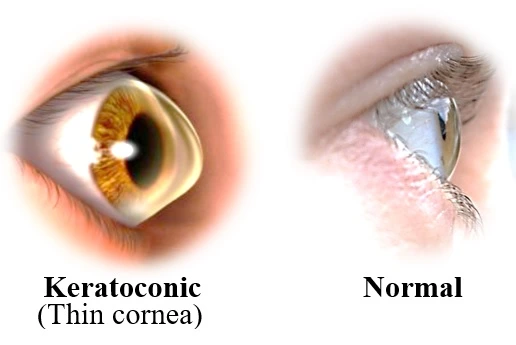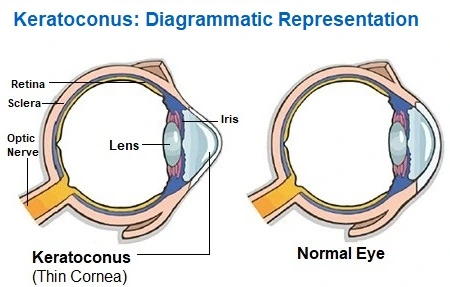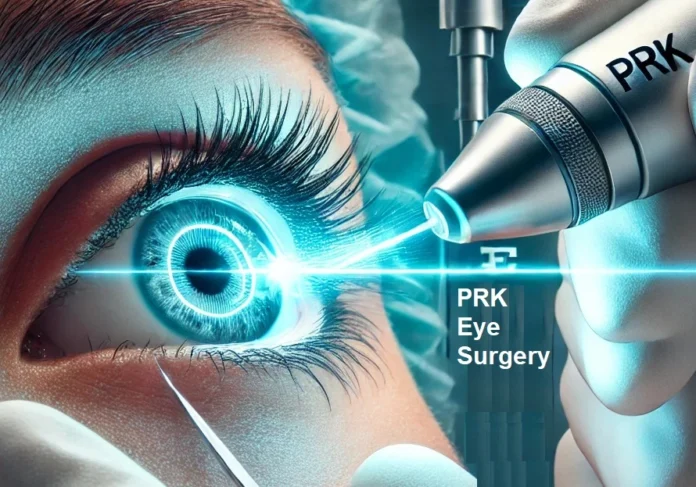From Black and White to a World of Color: Usman’s PRK Journey (True Story)
In a modest neighborhood of Peshawar, Mr. Muhammad Riaz dreamed of a brighter future for his son, Usman, who had suffered from Myopia since he was ten. Despite financial struggles, Mr. Riaz saved every rupee from his salary, determined to give Usman the gift of unclouded vision. With unwavering hope, he arranged PRK eye surgery, entrusting his son’s sight to the renowned ophthalmologist Dr. Javid Rasool serving Peshawar Institute of Medical Sciences.
On the day of the procedure, the atmosphere was a blend of nervous anticipation and quiet optimism. Under the expert care of Dr. Rasool, the surgery unfolded with remarkable precision. The delicate work of reshaping Usman’s corneas was complete in just a few brief moments.
As the effects of the laser settled in, Usman slowly opened his eyes. For the first time, the world around him transformed—what had once been a blur of black and white now burst into a vivid tapestry of color. With wonder in his voice, his very first words were, “The world is so colorful now!”

In that unforgettable moment, the father’s sacrifices were validated, and his heart swelled with pride. Thanks to his determination and Dr. Javid Rasool’s skilled hands, Usman’s life was forever changed—a testament to the power of hope, love, and the miracles of modern medicine.
What is PRK?
If you are dreaming of a life without glasses or contact lenses, PRK eye surgery might be the best solution. PRK stand for Photorefractive Keratectomy, which has been around since the 1980s and remains the most trusted option for vision correction. LASIK is often the most talked-about procedure, but PRK eye surgery is an alternative option for many people with certain condition.
How does PRK work?
PRK treats three kinds of refractive errors: myopia (nearsightedness), hyperopia (farsightedness), and Astigmatism. In PRK eye surgery, the cornea is reshaped by removing the outer layer of the cornea, called epithelium. An excimer laser reshapes the underlying corneal tissue. The epithelium regenerates naturally over time, and eyes heal without stitches or a flap.
PRK Eye Surgery Procedure – Step by Step
If the doctor recommended PRK, it’s natural to feel a little nervous about the procedure itself. Let’s explore the steps involved before, during, and after the procedure:

- Preparation:
The surgeon administers anesthetic eye drops to numb the patient’s eyes, ensuring a painless procedure. The medical staff will administer a mild sedative to help the patient relax. - Removing the Epithelium:
After the numbness of the eyes, the surgeon removes the outer layer of the cornea through a specialized brush, laser or solution. This layer is called epithelium. The remobing process is short and painless. - Reshaping the Cornea:
After removing the outer layer of the cornea, the surgeon uses a laser for reshaping the corneal tissue. A computer program tailored to the patient’s unique prescription performs this step to maintain accuracy and safety. - Placing Protective Lens:
After reshaping the corneal tissue, the surgeon places a protective contact lens on the eye to serve as a bandage, allowing the epithelium to naturally regenerate over the next 3 to 5 days.
What makes PRK the best?
PRK has some unique benefits that make it a better fit for certain people. Following are few reasons that distinguish PRK as the best choice for people with specific characteristics:
- Thin Corneas
People with thin cornea cannot go for LASIK eye surgery, whereas PRK is often the go-to alternative for such patients. In fact, PRK is safe for people with thin cornea because there is no creation of corneal flap.


- Active lifestyle
If you are an athlete and engaged with high impact activities, then PRK might be the best option to proceed with. In PRK, there is no risk of flap displacement or being dislodged during physical activity. - Dry Eyes`
PRK is the better option for those with dry eye syndrome because it does not disrupt the corneal nerves as much as LASIK. This can lead to fewer dry eye symptoms after surgery.

Recovery after PRK Eye Surgery
PRK eye surgery recovery is not as quick as LASIK eye surgery. However, the long-term benefits are worth the wait. Here’s what can be expected after the surgery is performed:
- First Few Days:
Experiencing mild discomfort, light sensitivity, and blurry vision in the first few days are common in PRK. To desensitize the infection and risk, the doctor prescribed eye drops that also helped to expedite the healing process. - First Week:
Unlike LASIK, the vision improves gradually because of the natural regeneration and growth of epithelium. Most people can return to work and light activities in the first week. - First Month:
Many people achieve 20/20 vision or better at the end of the first month of surgery. Some people may complain of glare or halos around lights, though this typically improves over time. In addition, vision will continue to stabilize, and any lingering dryness or haziness should subsidize.
The doctor may prescribe some pain-relief medications, lubricating eye drops, and protective bandage contact lenses to ease discomfort.
No, there is no need for glasses anymore, but wearing sunglasses is essential for some time to protect your eyes from bright light and UV exposure.
PRK can cause discomfort and mild pain after the procedure.





